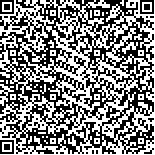| 摘要: |
| 采用基因工程的方法, 进行重组质粒HF443-EGFP的构建和在哺乳动物细胞中的表达, 并进行了其用于赤潮毒素检测的可能性研究。结果表明, 用PCR技术扩增EGFP基因, 用XbaⅠ、HindⅢ双酶切并纯化, 与同样双酶切并纯化的HF443质粒连接, 可构建重组质粒HF443-EGFP;利用Lipofect AMINE 2000转染体外培养哺乳动物BIU-87细胞。在培养体系中加入不同浓度的GTX, 而后加入Na+通道激活剂乌头碱以诱导绿色荧光蛋白表达, 荧光显微镜下观察细胞中绿色荧光蛋白表达的变化情况。细胞发出的荧光随毒素浓度的增加而减弱, 存在一定的剂量效应关系, 提示毒素GTX可显著影响绿色荧光蛋白的表达, 重组质粒HF443-EGFP用于赤潮毒素检测有一定的可行性。
|
| 关键词: c-fos启动子,绿色荧光蛋白,BIU-87细胞,赤潮毒素 |
| DOI:10.11693/hyhz200305012012 |
| 分类号: |
| 基金项目:国家重点基础研究发展规划(973)资助项目,2001CB409710号,2001CB409709号;教育部科学技术研究重点项目资助,00214号;广州市科技攻关课题资助项目,2001-Z-056-01号;广州市科技项目,2002J1-C0011号 |
|
| CONSTRUCTION OF A RECOMBINANT PLASMID HF443-EGFP AND ITS PRIMARY APPLICATION IN DETECTION OF HAB TOXINS |
|
LIU Jie-Shen, YANG Wei-Dong, CHE Jun, ZHEN Xi, JIANG Tian-Jiu, WU Chun-Li
|
|
College of Life Science and Technology, Jinan University
|
| Abstract: |
| In recent years the marine environment has been seriously damaged by the presence of several toxic phytoplanktonic species, especially dinoflagellates, which contaminate shellfish and other marine products through producing HAB toxins such as PSP and DSP etc. The incidence of seafood-borne illnesses is getting more frequent. The search for sensitive methodologies for the analysis of HAB toxins has been becoming a light spot in the marine environment, food security and related areas. To meet this demand, innovative analytical techniques have been developed that provide rapid and reliable detection of HAB toxins, of which, some have been used extensively in detection of toxins in seafood and related algae. However, there still remains a need for alternative testing protocols due to the use of live animals, availability of instrument and low sensitivity. In this paper, based on the cytotoxicity of PSP, which is a sodium channel blocker, the recombinant plasmid HF443-EGFP, containing a c-fos promoter and EGFP (Enhanced green Fluorescent Protein) gene has been constructed. The possibility in detection of HAB toxin by monitoring the expression of EGFP gene is explored. HF443-EGFP was transferred into BIU-87 cell. EGFP gene amplified by PCR was digested by Hind Ⅲ and XbaⅠ,and then ligated with the plasmid HF443 digested by the same endonuclease. BIU-87 cellwastransfected by HF443-EGFP, through LipofectAMINE2000. GTX, a sort of HAB toxin, was added into the system, and aconitine, a sodium channel activator was subsequently added to induce expression of EGFP. The expression of EGFP in the cell was observed under the fluorescent microscope. The result illustrated that, with the increase of the GTX level, the intensity of green fluorescence emitted by the cell decreased, which presented a certain dose-effect relationship. These results suggested that the expression of EGFP was influenced remarkably by GTX, and this method could be used to detect HAB toxin.
|
| Key words: c-fos promoter, Green Fluorescent Protein, BIU-87 cell, HAB toxin |
